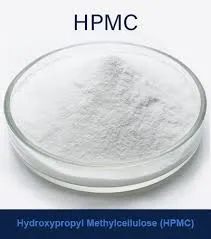
Sep . 21, 2024 18:25 Back to list
hydroxypropyl methyl cellulose cas no
Hydroxypropyl Methyl Cellulose Properties, Applications, and Significance
Hydroxypropyl methyl cellulose (HPMC) is a versatile, non-ionic cellulose ether widely used in various industries due to its unique properties and functionalities. With the Chemical Abstracts Service (CAS) number 9004-65-3, HPMC is synthesized from cellulose by substituting hydroxyl groups with hydroxypropyl and methyl groups. This modification imparts water solubility, thermal stability, and film-forming capabilities, making it an essential ingredient in many applications.
Hydroxypropyl Methyl Cellulose Properties, Applications, and Significance
In the construction sector, HPMC is widely utilized in cement-based products, such as tile adhesives, joint fillers, and plasters. Its water-retention properties prevent premature drying of these materials, ensuring proper hydration and improving adhesion. Furthermore, HPMC enhances workability, allowing for easier application and overall performance of construction materials. As a result, HPMC is an essential additive in modern construction practices, contributing to durability and longevity.
hydroxypropyl methyl cellulose cas no

The food industry also benefits from HPMC, where it serves as a food additive to improve texture and stability. It is commonly found in gluten-free products, acting as a binding agent that mimics the structure provided by gluten in conventional baked goods. HPMC enhances the mouthfeel of products and extends shelf life by preventing moisture loss. Furthermore, its use as a thickening and emulsifying agent in sauces, dressings, and ice creams underscores its versatility in food applications.
Moreover, HPMC’s role in cosmetics and personal care products cannot be understated. It is commonly used as a thickener, stabilizer, and film-forming agent in lotions, creams, and shampoos. The ability of HPMC to create a smooth texture makes it a preferred ingredient in many cosmetic formulations, enhancing user experience and product performance.
Environmental factors also play a significant role in the growing interest in HPMC. As consumers become increasingly aware of sustainability, HPMC offers a biocompatible alternative to synthetic polymers. Derived from natural cellulose sources, it aligns with eco-friendly practices and caters to the demand for sustainable products in various sectors.
In summary, hydroxypropyl methyl cellulose (HPMC), with its CAS number 9004-65-3, is a multifunctional compound with a wide range of applications across pharmaceuticals, construction, food, and cosmetic industries. Its unique properties, such as water solubility, gel formation, and thickening capabilities, make it a valuable ingredient that enhances product performance and stability. As industries continue to prioritize sustainability, HPMC stands out as an environmentally friendly choice that meets contemporary consumer demands. Its significance is likely to grow, reinforcing its role in modern formulations and applications.
-
Versatile Hpmc Uses in Different Industries
NewsJun.19,2025
-
Redispersible Powder's Role in Enhancing Durability of Construction Products
NewsJun.19,2025
-
Hydroxyethyl Cellulose Applications Driving Green Industrial Processes
NewsJun.19,2025
-
Exploring Different Redispersible Polymer Powder
NewsJun.19,2025
-
Choosing the Right Mortar Bonding Agent
NewsJun.19,2025
-
Applications and Significance of China Hpmc in Modern Industries
NewsJun.19,2025







